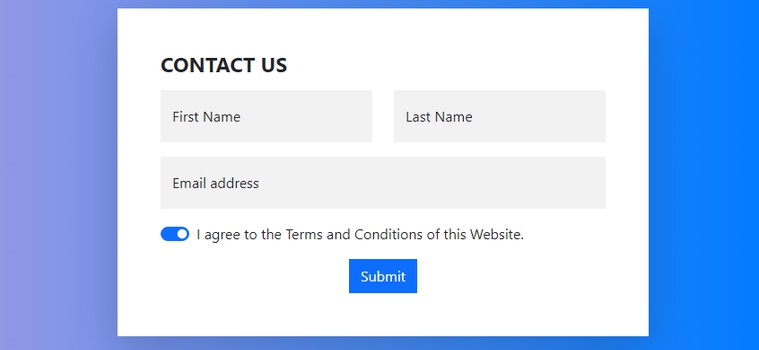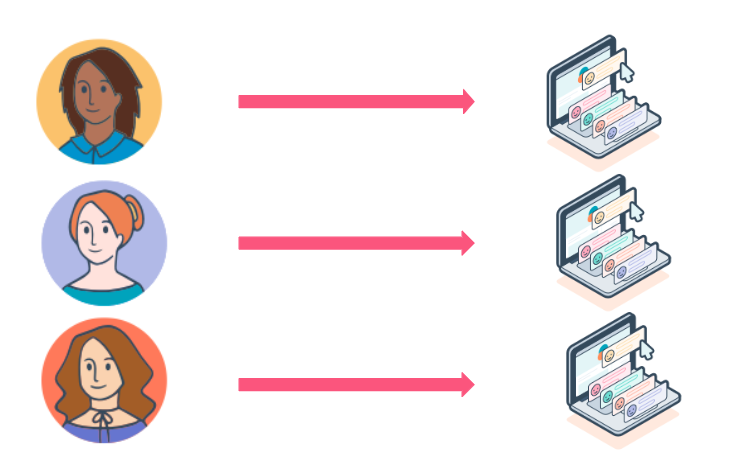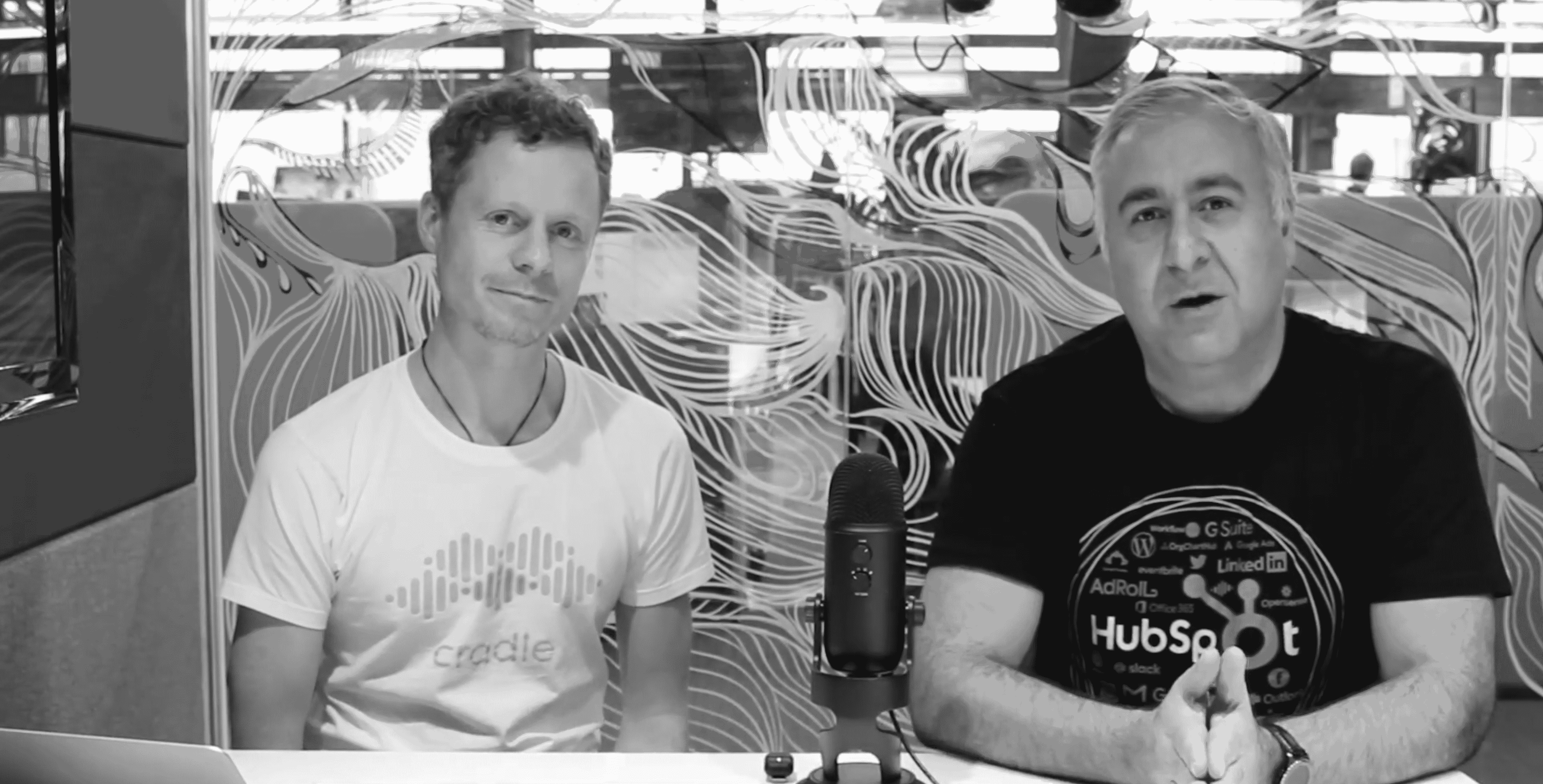How to ask the right sales questions
Sales is about addressing your customers’ needs and problems. By understanding the issues clients face, you can show them how your solution solves...
5 min read
Markezing Team : Oct 7, 2021 2:00:00 PM
%20(2).png)
Marketing is delivering the right message to the right audience at the right time. That’s it. But all too often marketers get caught up in delivering the same marketing messages to everyone in their database.
The risk of delivering the same message to all your leads and customers is that the message might not be relevant to some. With irrelevant content you risk annoying your audience and they may be less likely to read or engage with subsequent communication.
On the flipside the benefits of delivering personalised content to your audience include higher open rates, stronger click through rates and a higher propensity to buy.
In this article we’ll help you understand how to collect more data from your contacts, how to balance personalisation and privacy and the different ways to use personalisation in your marketing strategy.
A quick note, we generally work with accountants, bookkeepers and other advisors so the advice in this article is focused on professional services and not B2C or eCommerce businesses, where personalised shopping experiences, recommendations and remarketing are highly effective.
To use personalisation in your marketing strategy you first need to collect information about your contacts (leads and customers). We don’t recommend collecting every bit of information you can, we recommend collecting information that will make it easier for you to provide relevant information to your contacts.
For example, if you provide professional services to businesses, it makes sense to find out what industry the business is in and how big they are, but it’s probably not important to know the owner’s date of birth.
In addition to simply making good business sense to collect the right information, personalisation creepiness starts with asking your contacts for irrelevant information. Our simple rule of thumb to live by is, “if you’re not going to use it, don’t ask for it”.
We believe the most important information to collect — and thus the most likely info you’ll use in your marketing — is:
First name
Last name
Country
Business type and/or industry
Business size
Current pain points

Research has shown that personalisation improves engagement rates. In fact, 70% of millennials are frustrated with brands sending them irrelevant marketing emails and prefer personalised emails over batch and blast communications.
But at the same time, personalisation at the wrong times or personalisation that uses the wrong details is often considered creepy. According to Marketing Dive, 75% of consumers find many forms of marketing personalisation creepy. The survey respondents cited invasiveness, being stalked or watched, and being asked for personal information that seemed irrelevant to the campaign as examples of overreaching personalisation.
The final point is the point we’d like to reinforce in this article, especially for B2B businesses. Personalisation is only a strong marketing tactic when it helps your contacts understand the context of your offers or when it delivers a unique experience.
We recommend using the information you’ve collected to:
Explain how your product or service will solve your contact’s pain points
Offer specials to certain segments
Use first names to trigger an emotive response in your advertising
Calculate cost or time savings based on the your contact’s business size
Invite the right audience to the right events and webinars
We don’t recommend:
Making assumptions based on the data you hold and using those assumptions in your marketing
Making your contacts feel like they’re being stalked. For example, just because a contact is on your website at 11:59pm, doesn’t mean you should send them an email saying, ‘you should be in bed’.
Forcing personalisation. You don’t have to personalise content if it’s universally relevant or if it feels unnatural.
The companies that are using personalisation the best have discovered the importance of defining buyer personas and customer journeys before trying to personalise content. By understanding the motivations of your target audience and the ways they prefer to research and buy, they know which content (or offers) to serve and when.
If you can do that too, personalisation can become a valuable tool in helping you move your leads closer to a purchase decision and your customers closer to an upsell conversation — and not just a nice gimmick.
Not all website visitors are created equal. Some are customers, some are partners and some are leads discovering your website for the first time. Therefore, the content you display and the offers you make to your website visitors can’t be the same either. After all, an existing customer probably doesn’t need to book a free coffee chat with you via a meeting link if they already have your details and engage with you regularly.
A simple personalisation tactic you can implement immediately is dynamic calls to action, which reference the buyer’s lifecycle stage and industry.
Here’s an example:
Greg is in the hospitality business and perfectly fits your target persona.
He downloads your lockdown business recovery guide for hospitality businesses
The next time he visits your website, the ‘download a business recovery guide’ has been replaced with a new guide, ‘ten tips from hospitality veterans who have redefined their business’
You can also send Greg personalised emails, offering hospitality business recovery grant information, lockdown dining advice and a free takeaway menu cost analysis.
The offers in the email can be dynamic served each time he visits your website and used as remarketing ads when Greg visits Facebook, LinkedIn and other sites with display advertising.
HubSpot and other marketing automation platforms make it easy to use dynamic calls to action on your website with workflows, list memberships and accurate first party cookies.

When you think about personalisation it is easy to think about banner ads and email subject lines, but we’re seeing more and more companies use personalised video to drive email engagement and sales meetings. Research has shown that personalised videos capture attention better than other forms of media and drive engagement through increased click through rates.
Personalised video works just like personalised banner ads or emails. You simply record a video with the content you want to send to your contacts, but leave a placeholder for some personalisation, just like a personalisation tag in your emails (e.g., Hi <first name>).
Most examples we’ve seen include a founder or sales rep recording a piece to camera while holding up a whiteboard or piece of paper with the contact’s first name (see below). In the Greg example above, we could send Greg some tips for navigating hospitality’s new normal with an offer of a free consultation and on the video preview that we’ll include in the email include a banner saying, ‘Greg, we’ve got the tips, so you get more tips’.
Video platforms such as Vidyard — which also integrates with HubSpot — can help you personalise your videos. Vidyard also has other useful features such as advanced watching analytics and even the ability to create mid-stream calls to action which allow your viewers to choose which content within a video to watch next.
Remarketing is when you serve ads to your previous website visitors on Google, third part websites or social media. It’s an effective marketing strategy when you haven’t been able to convert website visitors first time round. Your business stays in their minds and reminds them of the benefits they can get from doing business with you.
To personalise your remarketing ads, use language such as ‘still deciding’, ‘it’s not too late’ and ‘another reason’ and combine it with collected data about your visitor’s current lifecycle stage and customer journey thus far.
Here are some ways you could use personalisation in your remarketing ads:
Reference the content a lead has downloaded on your website
Mention the referral source that the website visitors came from or the first page they landed on when they arrived at your website.
Use personal and business names
Use images that reflect the visitor’s industry
Use dedicated industry, segment and buyer persona landing pages as a destination URL.
Personalisation isn’t possible without first collecting information and data from your contacts. To do that you need an exceptional marketing automation tool and foolproof data protection technology and processes. You’ll also need to commit to using your contact’s data transparently and fairly.
It is completely acceptable to ask your contacts for information that’s relevant to the relationship. But explain why you’re collecting the information and how you’ll use it. Don’t overstep the mark and never let personalisation get in the way of professionalism.
For advice on marketing personalisation, book a chat with our marketing experts today.
.png)
Sales is about addressing your customers’ needs and problems. By understanding the issues clients face, you can show them how your solution solves...
.png)
Marketing automation has been around for years, and video has been around even longer. But using these two tools together is uncharted territory for...

1 min read
Networking can be a key way to keep your business growing. Regardless of your industry or business size, it is hard to ignore the benefits of forming...